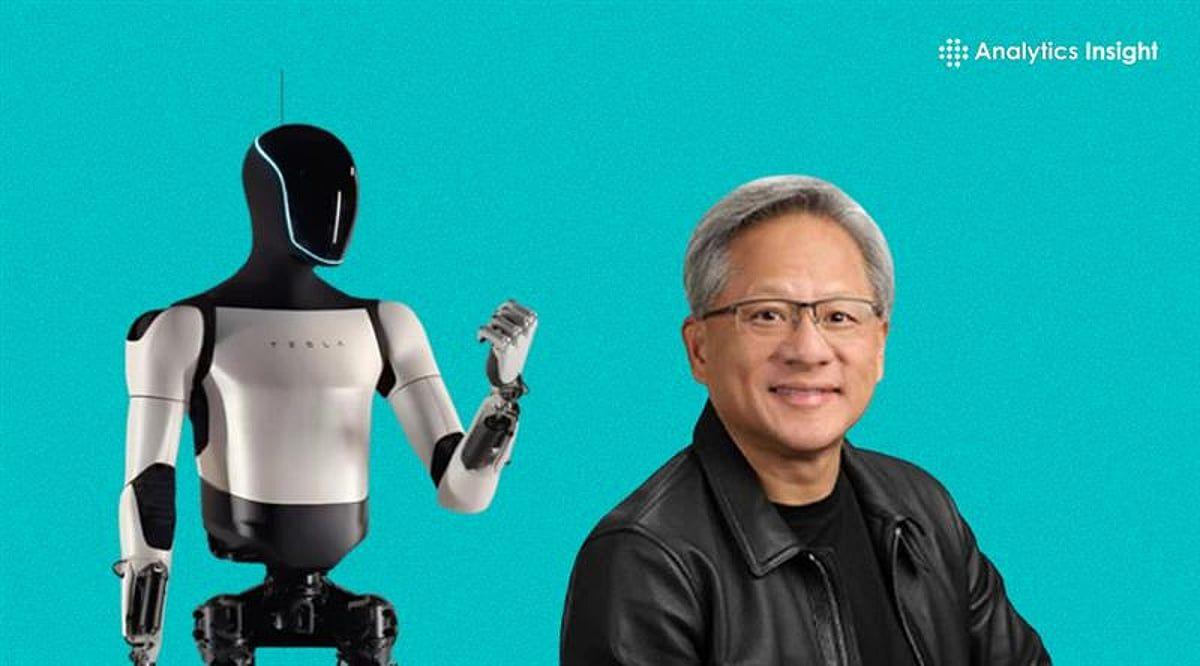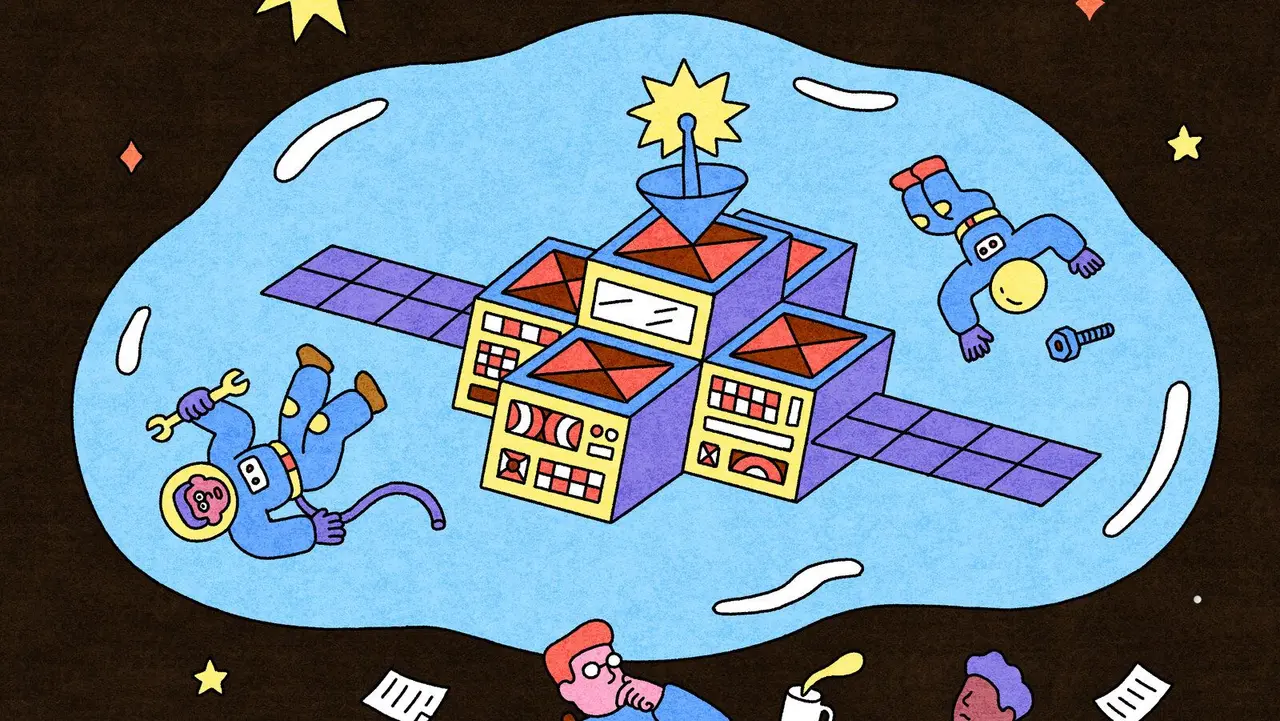Microsoft Unveils Zero-Water Data Center Design to Reduce AI's Environmental Impact
7 Sources
7 Sources
[1]
AI will stop consuming half a liter of water per question thanks to Microsoft's new design - Softonic
The use of water to cool data centers is one of the major environmental problems: Microsoft seems to have solved it We have said it many times, bringing AI to life costs a lot of water. Also the cloud and large-scale computing. And all these large and heavy tasks take place in large data centers or servers, which need to be cooled on a large scale, and water has been the most used element so far to achieve this. Even though it is a scarce resource. Well, fortunately for the planet and the living beings that inhabit it, Microsoft believes that the key lies in recycled water. Microsoft's latest data centers will employ a new cooling system that does not extract water from the environment. The design aims to address environmental concerns as the rise of AI drives the construction of data centers. Although the company calls its new design a "waterless" system, it still uses water to cool its servers. Unlike traditional data centers, which divert and evaporate billions of liters per year, Microsoft's new system recycles water between the servers and coolers in a closed loop that does not require new water after the initial construction. As in any normal building, only the kitchens and bathrooms need external water. On the negative side, the company plans to continue using older facilities cooled by air and water with traditional cooling systems, but it is gradually working to reduce its water consumption. Since 2021, the total water consumption of Microsoft's data centers has decreased by 39%: from 0.49 to 0.30 liters per kilowatt hour. However, the new system, which the company plans to use in all its future data centers, reduces that figure to almost zero. The new facilities will begin to employ it in Phoenix (Arizona) and Mt. Pleasant (Wisconsin) in 2026, and more are planned for other locations by 2027. Microsoft estimates that each data center using the new design could save more than 125 million liters of water per year. The main drawback is the higher energy consumption, but new chip-level cooling methods that allow for higher operating temperatures could mitigate the impact. By the way, the most ambitious plan for efficient data center operation could be to put them in orbit. No joke: free cooling by being in Space and unlimited solar energy.
[2]
Microsoft's new data center design dramatically decreases water usage
Why it matters: Operating data centers requires a lot of energy, and the enormous amount of water used to cool them is a growing environmental concern. As the expansion of AI data centers exacerbates the problem, tech giants are searching for ways to mitigate their environmental and climate footprint. Microsoft believes that recycled water holds the key. Microsoft's latest data centers will employ a new cooling system that doesn't draw water from the surrounding environment. The design aims to address environmental concerns as the AI boom drives data center construction. Although the company calls its new design a "zero-water" system, it still uses water to cool its servers. Unlike traditional data centers that divert and evaporate billions of gallons per year, Microsoft's new system recycles its water between servers and chillers in a closed loop that requires no new water following initial construction. Like any normal building, only the kitchens and restrooms require external water. The company plans to continue using older air-cooled and water-cooled facilities with traditional cooling systems but is gradually working to reduce its water usage. Since 2021, the total water consumption from Microsoft's data centers has fallen 39 percent from 0.49 to 0.3 liters per kilowatt hour. However, the new system, which the company plans to use for all its future data centers, reduces that number to nearly zero. New facilities will begin employing it in Phoenix, Arizona, and Mt. Pleasant, Wisconsin in 2026, and more in other locations are planned for 2027. Microsoft estimates that each data center using the new design might save over 125 million liters of water annually. The primary drawback is increased energy usage, but new chip-level cooling methods that enable higher operating temperatures might moderate the impact. Multiple groups are proposing other methods of improving server cooling to minimize water consumption. A recent study from the University of Texas describes a mechanochemically engineered alloy that substantially improves liquid metal cooling. Additionally, the US Department of Commerce recently promised millions in CHIPS Act funds to an Oakland company that proposed integrating diamond - a superior thermal conductor - into semiconductors. However, the most ambitious plan for efficiently operating data centers might be to launch them into orbit. According to a European venture, operating data centers in space would remove the requirement for water cooling and enable them to use unlimited solar energy.
[3]
Microsoft reveals new zero-water data center cooling design
Microsoft is aiming to reduce its reliance on natural resources by eliminating the need for water to cool its power- and resource-hungry AI data centers in a major leap forward for sustainability. The company plans to employ chip-level cooling technology on a much tighter scale, enabling it to use a closed-loop system to recycle water and therefore stop wasting the resource. Microsoft has already reported a 39% improvement in its Water Usage Effectiveness (WUE) since 2021, and by 80% since its first-generation data centers in the early 2000 - and it hopes transitioning to a closed-loop system where the water is reused could see it improve this figure even more. Comparing the new system to its performance this financial year, Steve Solomon, VP for Data Center Infrastructure Engineering, confirmed: "This design will avoid the need for more than 125 million liters of water per year per datacenter." Solomon explained how the system, which was introduced in August 2024, works: "Once the system is filled during construction, it will continually circulate water between the servers and chillers to dissipate heat without requiring a fresh water supply." This year, Microsoft reported using 0.30 liters of water per kWh of consumption for IT equipment for the purpose of humidification and cooling, down from 0.49L/kWh in 2021. It has also been sourcing reclaimed and recycled water for data centers in Texas, Washington, California and Singapore in order to reduce its impact on the natural water course. Solomon added that existing data centers will continue to use their current mix of air-cooled and water-cooled systems, suggesting that they won't be upgraded over time, however when they retire they will likely be replaced by closed-loop cooling systems. New projects in Phoenix, Arizona, and Mt. Pleasant, Wisconsin are set to pilot the new closed-loop cooling system in 2026 before they're taken online in 2027. Moreover, Noelle Walsh, CVP for Cloud Operations and Innovation at Microsoft, said earlier in 2024 the company plans to replenish more water than it consumed locally for data centers by the end of the decade.
[4]
Microsoft Unveils Zero-Water Data Centers to Reduce AI Climate Impact
Microsoft's existing data centers will still use a mix of older tech Microsoft, trying to mitigate the climate impact of its data center building boom, is starting to roll out a new design that uses zero water to cool the facilities' chips and servers. Launched in August, the new design will eliminate the more than 125 million liters of water each data center typically uses per year, the company said in a statement. The new system use a "closed loop" to recycle water; liquid is added during construction and continually circulated -- obviating the need for fresh supplies. Data centers will still require fresh water for worker facilities like bathrooms and kitchens. Microsoft spent more than $50 billion (roughly Rs. 4,24,322 crore) on capital expenditures in the fiscal year ended June 30, the vast majority related to data center construction fueled by demand for artificial intelligence services. It plans to top that figure in the current year, requiring rapidly rising amounts of energy to run the networks and water to cool equipment. Many of latest facilities are going up in hot, dry areas like Arizona and Texas, making it even more critical to find ways to conserve water. Microsoft's existing data centers will continue to use a mix of older technologies, but new projects in Phoenix and Mount Pleasant, Wisconsin, will begin using the zero-water designs in 2026. © 2024 Bloomberg LP
[5]
Microsoft touts next-gen data centers that don't consume water for cooling
Microsoft Corp. has unveiled a new data center design that consumes no water to cool the chips and servers at a facility, which could save millions of liters of water amid scrutiny over the climate impact of artificial intelligence. First rolled out in August, the new data center design "consumes zero water for cooling" by recycling it through a "closed loop" system that circulates water between servers and "chillers" that remove heat without the need to be topped up, Microsoft said in a Dec. 9 post. "By adopting chip-level cooling solutions, we can deliver precise temperature control without water evaporation," the company said. Water would still be used for onsite necessities like toilets and kitchens, it added -- but the design "will avoid the need for more than 125 million liters of water per year per data center." Environmental groups and academics have warned that the data centers backing the computing power needed for popular AI models, crypto mining and online services like email use a significant amount of power and water. The Washington Post reported in September that OpenAI's ChatGPT consumes around half a liter of water to write 100 words, while a study in late 2023 found that the water needed to cool the mining rigs for a single Bitcoin BTC $96,953 transaction could fill a regular household pool. Related: Google unveils new quantum computing chip: Clock ticking for crypto encryption? Microsoft said its current data centers will stay using air and water-cooled tech, but its new projects in Arizona and Wisconsin will pilot the new system in 2026. It added that in August, it started to use its new "zero-water evaporation" system as the primary cooling system for its new data centers that will start to come online in late 2027. Microsoft's earnings for the quarter ended Sept. 30 were boosted by a 33% year-on-year growth in its AI-powered Azure business but it also signaled it would spend big on AI over the next quarter with no promise of a quick return on investment.
[6]
Microsoft Unveils Zero-Water Data Centers to Reduce AI Climate Impact
Microsoft Corp., trying to mitigate the climate impact of its data center building boom, is starting to roll out a new design that uses zero water to cool the facilities' chips and servers. Launched in August, the new design will eliminate the more than 125 million liters of water each data center typically uses per year, the company said in a statement. The new system use a "closed loop" to recycle water; liquid is added during construction and continually circulated -- obviating the need for fresh supplies.
[7]
Microsoft Unveils Zero-Water Data Centers to Reduce AI Climate Impact
(Bloomberg) -- Microsoft Corp., trying to mitigate the climate impact of its data center building boom, is starting to roll out a new design that uses zero water to cool the facilities' chips and servers. Launched in August, the new design will eliminate the more than 125 million liters of water each data center typically uses per year, the company said in a statement. The new system use a "closed loop" to recycle water; liquid is added during construction and continually circulated -- obviating the need for fresh supplies. Data centers will still require fresh water for worker facilities like bathrooms and kitchens. Microsoft spent more than $50 billion on capital expenditures in the fiscal year ended June 30, the vast majority related to data center construction fueled by demand for artificial intelligence services. It plans to top that figure in the current year, requiring rapidly rising amounts of energy to run the networks and water to cool equipment. Many of latest facilities are going up in hot, dry areas like Arizona and Texas, making it even more critical to find ways to conserve water. Microsoft's existing data centers will continue to use a mix of older technologies, but new projects in Phoenix and Mount Pleasant, Wisconsin, will begin using the zero-water designs in 2026.
Share
Share
Copy Link
Microsoft introduces a new data center cooling system that dramatically reduces water consumption, addressing environmental concerns as AI drives increased demand for computing power.

Microsoft's Innovative Approach to Data Center Cooling
Microsoft has unveiled a groundbreaking "zero-water" data center design aimed at significantly reducing the environmental impact of artificial intelligence and cloud computing. This new cooling system, introduced in August 2024, addresses growing concerns about the massive water consumption associated with traditional data centers
1
.The Zero-Water Cooling System
While Microsoft refers to it as a "zero-water" or "waterless" system, it still utilizes water for cooling. The key innovation lies in its closed-loop design, which recycles water between servers and chillers, eliminating the need for fresh water after initial construction
2
. This approach contrasts sharply with traditional data centers that divert and evaporate billions of liters of water annually.Environmental Impact and Water Savings
The new design is expected to save over 125 million liters of water per year for each data center
3
. This is a significant improvement, considering that Microsoft has already reduced its Water Usage Effectiveness (WUE) by 39% since 2021, from 0.49 to 0.30 liters per kilowatt-hour4
.Implementation Timeline and Locations
Microsoft plans to pilot this new cooling system in Phoenix, Arizona, and Mt. Pleasant, Wisconsin, starting in 2026. The company aims to implement this design in all its future data centers, with more locations planned for 2027
5
.Challenges and Trade-offs
While the new system dramatically reduces water consumption, it does come with some drawbacks. The primary concern is increased energy usage. However, Microsoft is exploring new chip-level cooling methods that enable higher operating temperatures, which could help mitigate this impact
2
.Related Stories
Broader Industry Context
The development of this cooling system comes at a crucial time, as the AI boom is driving rapid data center construction. Environmental groups and academics have raised concerns about the significant water and energy consumption of AI models, cryptocurrency mining, and other online services
5
.Microsoft's Ongoing Sustainability Efforts
This initiative is part of Microsoft's broader commitment to sustainability. The company has been working on reducing its environmental impact, including sourcing reclaimed and recycled water for data centers in various locations. Microsoft has also set an ambitious goal to replenish more water than it consumes locally for data centers by the end of the decade
3
.References
Summarized by
Navi
[1]
Related Stories
AI Data Centers: The Hidden Environmental Cost and Innovative Cooling Solutions
26 Sept 2025•Technology

Data Centers' Water Consumption Surges Amid AI Boom, Raising Environmental Concerns
20 Aug 2024

AI's Water Crisis: Data Centers' Unsustainable Thirst Threatens Global Water Resources
17 Jun 2025•Technology

Recent Highlights
1
Meta acquires Manus for $2 billion, adding revenue-generating AI agents to its platforms
Business and Economy

2
China proposes world's strictest AI chatbot rules to prevent suicide and emotional manipulation
Policy and Regulation

3
Deepfakes cross indistinguishable threshold as voice cloning and video realism surge 900%
Technology





